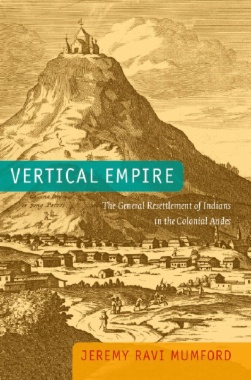In 1569 the Spanish viceroy Francisco de Toledo ordered more than one million native people of the central Andes to move to newly founded Spanish-style towns called reducciones. This campaign, known as the General Resettlement of Indians, represented a turning point in the history of European colonialism: a state forcing an entire conquered society to change its way of life overnight. But while this radical restructuring destroyed certain aspects of indigenous society, Jeremy Ravi Mumford's Vertical Empire reveals the ways that it preserved others. The campaign drew on colonial ethnographic inquiries into indigenous culture and strengthened the place of native lords in colonial society. In the end, rather than destroying the web of Andean communities, the General Resettlement added another layer to indigenous culture, a culture that the Spaniards glimpsed and that Andeans defended fiercely.
- Contents
- Acknowledgments
- Introduction
- Part I: Ethnography
- 1. The Cities
- 2. The Mountains
- 3. The Grid
- 4. Lords
- Part II: Resettlement
- 5. “That So-QualifiedAssembly”
- 6. The Viceroy
- 7. Tyrants
- 8. On the Ground
- Part III: After
- 9. In and Out of the Reducciones
- 10. Four Hundred Years
- Epilogue
- Appendix
- Notes
- Glossary
- Bibliography
- Index

